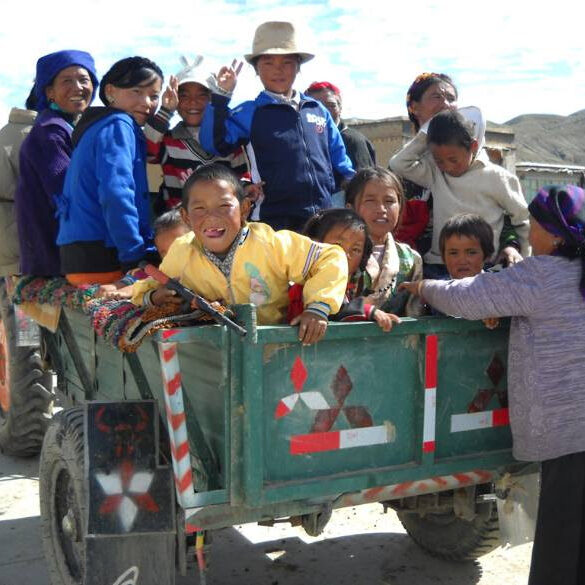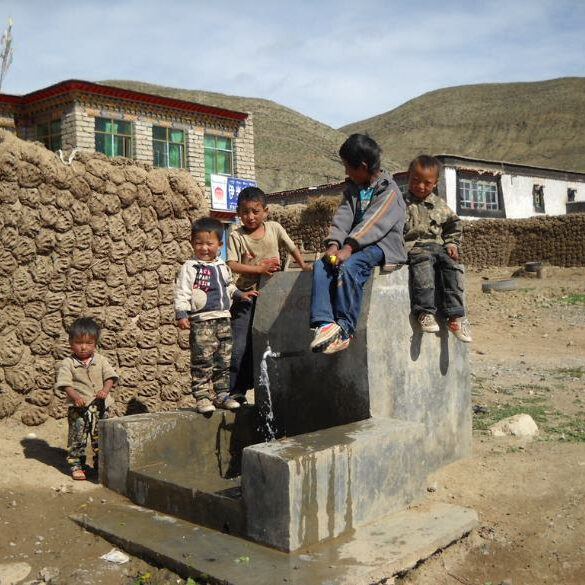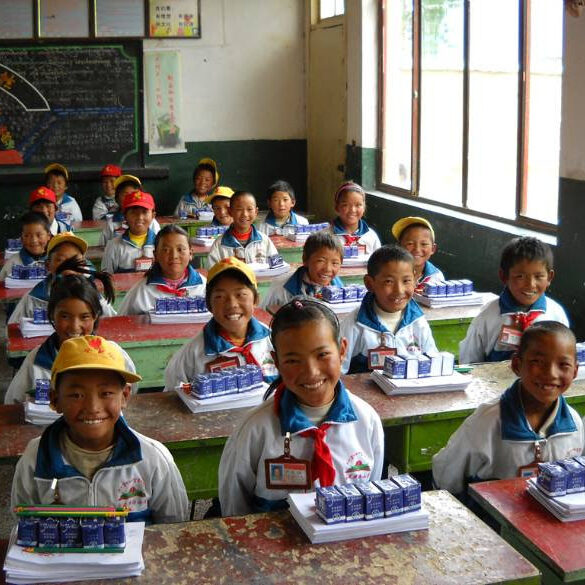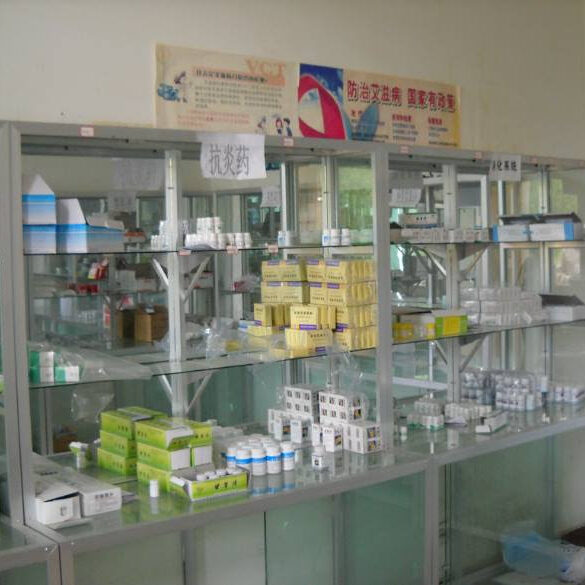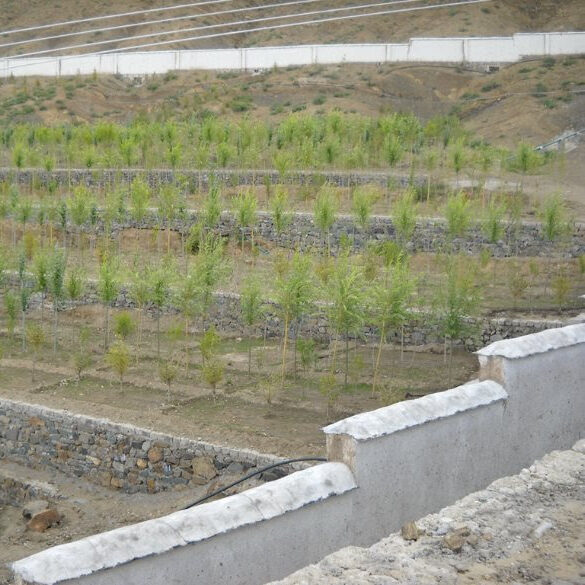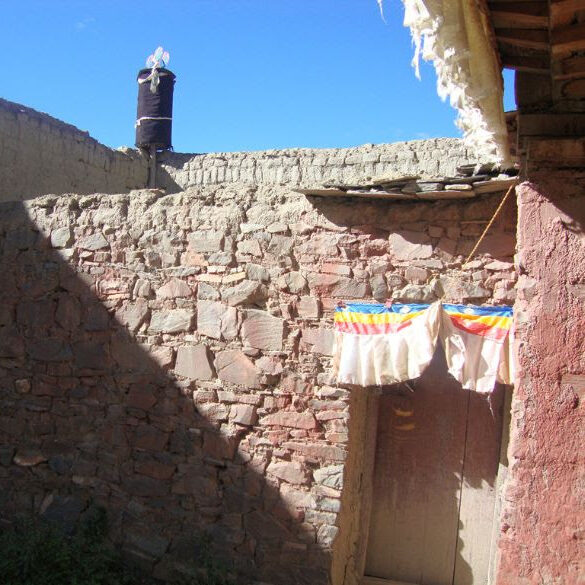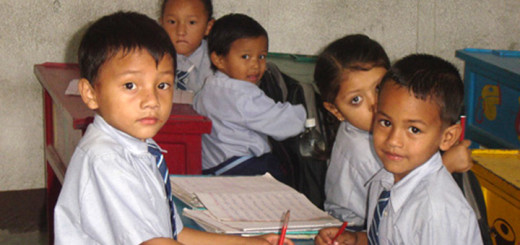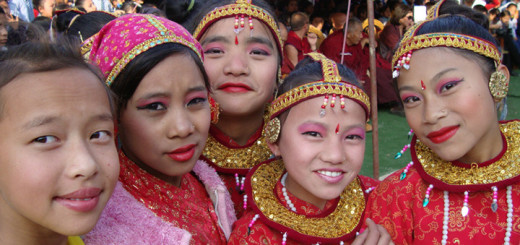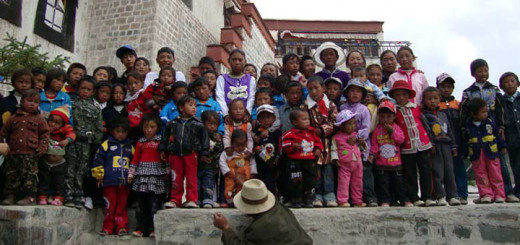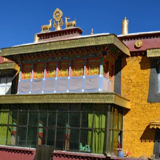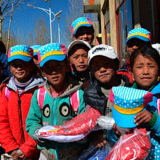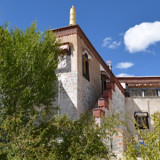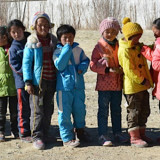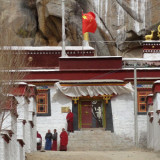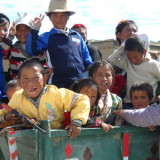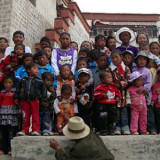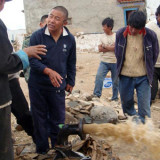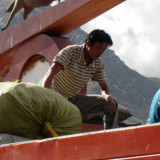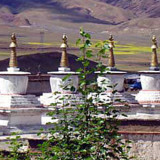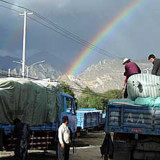Tibet 2011
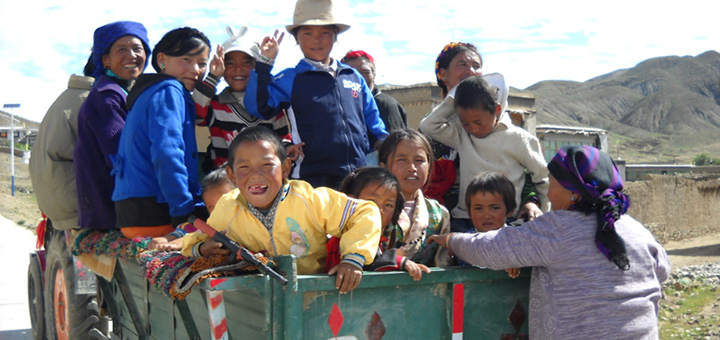
Long Distance Adoptions
Once again this year the main activity of the Association in Tibet was the support given to the children adopted at a distance, their families and the communities in which they live.
This year our aid reached about 20 villages in the district of Dakshu Shang, a plateau of central Tibet at an altitude of 4,000 mts where the living conditions are particularly difficult due to the high altitude, the extreme climate and lack of rain, which make it a sort of high-altitude desert.
The economy of the families in this area is based primarily on mountain agriculture carried out almost exclusively by manual work – the harvested crops are generally not sufficient even to support a family – and some animal rearing.
For the approximately 2000 children who live in these villages the Association purchased basic necessities, which often the families can not afford due to their lack of monetary income: leather and canvas shoes, jackets, sweaters, pants, woolen tights, t-shirts, hats, toothbrush, toothpaste, towels and so on. The children attending school also received school uniforms and enough school materials for the entire school year, the cost of which are often out of reach of their families. The harvests of each family have been increased with 25 kg sacks of rice and flour, distributed according to the population lists prepared in collaboration with the local government.
The adopted children from every village were called one by one to be photographed and many of them had prepared letters – usually very simple in content, but full of sincere gratitude – for their benefactors. The children awaiting adoption were also photographed, village-by-village: the photo is a precious moment for them, a symbol of hope that no one wants to give up.
Water
Water is a most valuable asset in these villages: no one has water at home, and many villages are still without a water supply sufficient for the basic needs of the families – provided by one or more fountains in the streets of the village – or for irrigation. Here it rains rarely, and only in the summer months when the monsoon from India manages to cross the Himalayan barrier. Then, for months and months at a time it never rains.
This year the aqueduct for the villages of Singma and Gangchen was completed, which makes use of a spring located about 60 feet underground. The water is carried to the villages – placed higher than the source – thanks to an electric pump and is then channeled several kilometers in pipes buried at least three feet underground, to withstand the cold winter. Water for irrigation is collected in three tanks.
This technology has recently been made available in this area, offering very good results, and it is hoped that it can soon be applied in other villages.
Schools
The parents of children adopted through the Association are almost all illiterate, and even at the beginning of our activities in Tibet, 13 years ago, the percentage of children who attended school in the villages was very low.
Thanks to funds raised by the Association new schools were built in both Singma and Nepu villages. The school of Nye, which educates up to class six, receives important donations every year from the Association, and the families of the children who attend school receive the school supplies and financial assistance necessary for their education.
Today, the vast majority of children are able to attend school, at least until class six. However, the number of children attending high school is also increasing every year and some students have even reached the great goal of going to university.
Once again this year there was a ceremony for the distribution of aid and school supplies to about 500 students from Nye School – many of whom live in the school, because their villages are too far away reach daily – together with those of Nepu and Singma schools. All the teachers and representatives of the local authorities were present at Nye School for the distribution.
Dispensaries
Until a few years ago in the Dakshu Shang district it was impossible to obtain medical care, nowadays there are small dispensaries working in the area, in particular that of Nye Village – the most important – which has full-time resident doctors. With this in mind the district requested help from the Association for the construction of housing for two doctors and their families. This summer the housing, placed just outside the wall of the clinic, was completed so as to guarantee 24-hour assistance. The clinic also includes rooms and beds for patients and a gynecology department. The treatments are offered at minimal cost, and a register of the estimated 5000 people living in surrounding villages is near to completion. Each person is issued with a health card. Other smaller clinics are active in the villages of Nepu and Singma.
Trees
After traveling to this region of Tibet, it is easy to understand the immense value of our precious forests. In the villages of Dakshu Shang trees are rare, because of altitude, arid climate and the hard and stony soil. The villages and fields used for cultivation are totally exposed to the searing sun and the strong winds of the plateau cause violent sand storms and erosion of the already infertile soil, the rainfall – concentrated in the summer months – is often torrential.
A patient work of reforestation has been undertaken in recent years, particularly around the villages of Gangchen, Singma and Dhonnang: the saplings are purchased and planted in the spring. Thanks to the work of the villagers holes are dug in the hard ground, the trees are planted and then have to be patiently watered and encircled by wire mesh to protect them from animals. Thanks to diligent care almost all of the trees already planted are growing and are in good condition; about 2000 new trees have been planted this year. Around May the leaves begin to appear and in the summer months, around the villages, they are beginning to see the first green areas.
The dedications to people who have been offered a tree are all brought to Tibet, and read during the ceremonies at the monastery: a great gift for the future of children and for the families living in the villages.
Monasteries
The funds collected by the Association have reached once again this year several small monasteries of central Tibet, the maintenance of which are exclusively based on donations. The monasteries are the custodians of the precious Tibetan tradition, and are a reference point and place of fundamental help for all the inhabitants of surrounding villages.
The aid received is used equally for all the monks, to cover their basic needs: food, shoes, medicines, blankets, fuel and so on.
This year, the Monastery of Nimo, a small monastery in the mountains, has started the reconstruction of rooms for the thirty-two monks, who are presently housed in small unfit spaces, totally inappropriate to their number. The Association is still collecting funds to help pay for this work.

